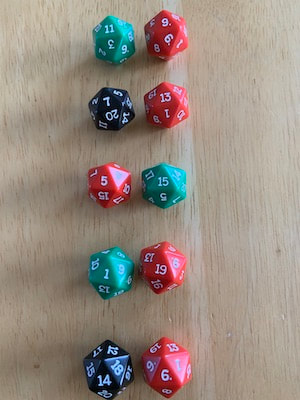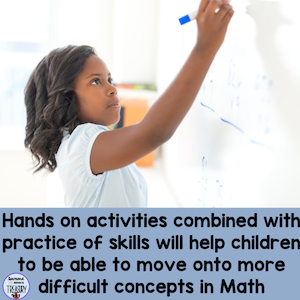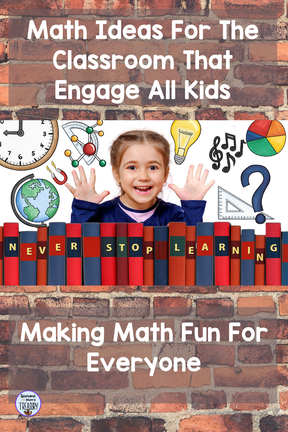|
Math is often considered difficult because it is abstract and it doesn't seem to make sense. It doesn't have to be the case though. Here are some tips and strategies to help make sense of math and help struggling students develop an understanding and more confidence. 1. Try A Road Map Analogy For ThinkingSometimes we need to approach teaching math in a different way so that it can be better understood by our students. Drills and worksheets don't work for everyone. Sometimes kids need to do concrete activities for longer periods of time before moving to abstract activities. It is important that we understand what a child's thinking process is so that we can help to redirect them of they are off-track. I encourage my students to share their thinking and I start off my year by explaining to my kids that we all may have different paths that we take, but if we end up at the destination, that is okay. I refer to our thinking as a road map. We talk about how we get downtown. We discover that not everyone takes the same route, but we end up at the same place. If someone gets lost, they can be redirected. When they share their thinking in math and how they got to their answer, it works the same way. I can help them if they took a wrong turn and need to be redirected. It is important for others to hear that there is more than one way to solve a problem. As we share out thinking out loud, it helps others to see that sometimes they are not the only one to take that route. It also helps them to see another route that they might be able to try next time. 2. Use Manipulatives To Visualize ConceptsUsing manipulatives helps tactile learners to better see concepts. This helps them to be able to transfer the ideas into abstract situations down the road. I often use games and interactive activities for teaching and reinforcing concepts. The engagement also helps to develop confidence in using strategies without realizing they are doing it. They are having fun and learning in the process. This is a win-win. 3. Make Sure They Have A Solid Understanding Of Addition And SubtractionA couple of years ago, I started helping out with math groups at the school I worked at before retiring. I discovered that there were several children in the early intermediate grades that struggled with basic math concepts and simple operations like addition and subtraction. Without these concepts, how were they going to be successful with more complex ideas and operations. I decided to take them back to the beginning and work on addition strategies. Since they were older, I didn't want them to feel like I was "babying" them, so I had to come up with more sophisticated ways of doing things. 4. Use Dice To Practice Making TensOne thing I did was a dice activity for making tens. At first they couldn't put two numbers together to make ten without actually counting them. Through this game, they became proficient at making tens and even enjoyed competing with others to see who could find the tens first. Here are some pictures to show you what we did. I am using 10 sided dice here, but I created 6 sided dice options for my students as well based on the dice used in a popular game. See below for the numbers used and how I did them. Once they were comfortable with making 10, we moved on to 20 using 20 sided dice and I explained to them that we do the same thing, but we add a 10. For example, 7+3=10 so 17+3 = 10+10 because the 17 is 7 with a 10 added to it. It didn't take them long to be able to quickly make 20 as well. When they were able to quickly make tens and twenties, I combined a variety of different dice, 6 sided, 10 sided, and 20 sided and allowed them to combine 3 dice to make 20. It was interesting to see the excitement as they rose to the challenge. 5. Use A Variety Of StrategiesUsing the dice is only one example, but it shows that once they can quickly make tens they can move on. We also worked on other addition and subtraction strategies in a similar way. Then we went on to single digit multiplication and discussed how it was like repeated addition, but faster. Instead of memorizing facts, we learned strategies. If you want to find out more about this, check out my blog post on multiplication strategies. I tutored a couple of girls and used these same concepts. Although it is still sometimes challenging for them to learn new concepts, they are able to handle multiple digit multiplication and division questions and even word problems with better understanding now. We also were able to move on to time, money, and fractions. They are now in grade 7 and due to the pandemic I haven't been working with them this year, but I know that the foundation we developed is helping them to manage. 6. Be Creative When Differentiating To Reach More LearnersOne thing I learned during my teaching career was to be creative and do things differently if necessary to engage the learners and help them to make sense of the concepts being presented. I hope these ideas will help you to find ways to help your students to make sense out of math. Related Posts
Comments are closed.
|
About Me Charlene Sequeira
I am a wife, mother of 4, grandmother of 9, and a retired primary and music teacher. I love working with kids and continue to volunteer at school and teach ukulele. Categories
All
|





















 RSS Feed
RSS Feed